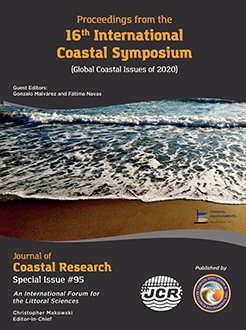Li, L. and Jun, K.S., 2020. The joint effect of river flow and tides on the determination of design flood levels in the Han River. In: Malvárez, G. and Navas, F. (eds.), Global Coastal Issues of 2020. Journal of Coastal Research, Special Issue No. 95, pp. 257–261. Coconut Creek (Florida), ISSN 0749-0208.
In tidal rivers, flood water levels are driven by a joint effect of upstream river discharge and downstream tidal level. Design flood level, which is used to design structures for flood protection, is usually determined by a steady-state flow model using constant values of upstream river discharge and downstream water level as inputs. However, the approach applying a steady-state flow model can overestimate water levels in tidal rivers because flood wave attenuation and the joint effect of river flow and tides are not taken into consideration. In this study, to investigate the effect of river-tide interaction on water levels along tidal rivers, a time series of design flood flow at the upstream boundary and a large number of tide scenarios at the downstream boundary are forced into a one-dimensional hydrodynamic model of the Han River, resulting in peak water levels along the river. Design flood levels are determined through a statistical analysis of the obtained peak water levels. The design water levels estimated by the proposed approach tend to be lower than that determined by a steady-state flow model. Moreover, a significant difference in the estimated peak water levels is observed near the downstream boundary due to different tide scenarios.





